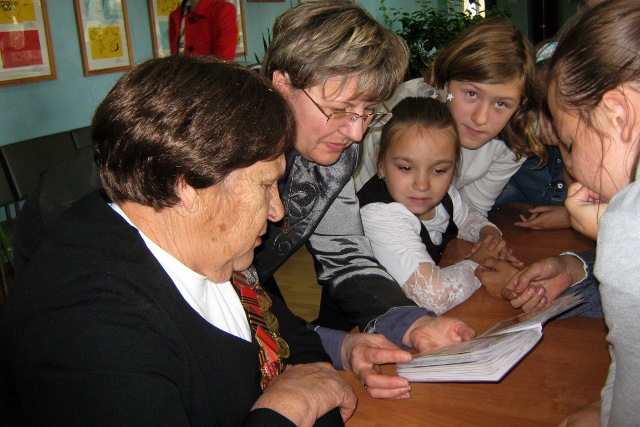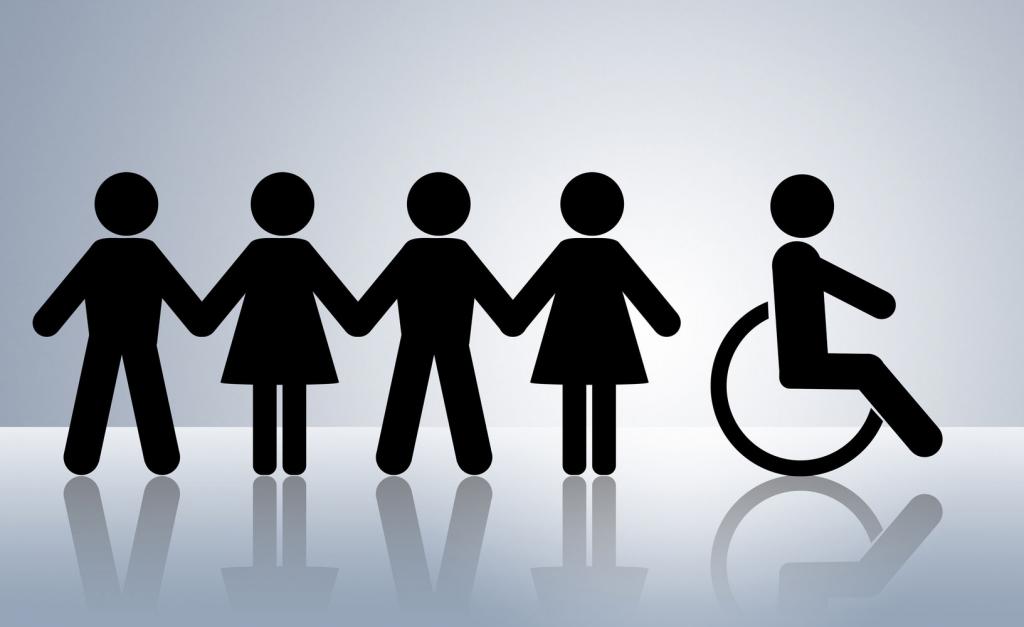Social support (social protection) of the population is a set of measures aimed at meeting the social needs of a person. It is especially important for socially vulnerable categories of citizens: pensioners, disabled people, participants in the Second World War, large families, children without parents, workers in hazardous industries, etc.

Social support measures
The provision of various services, benefits and payments to the needy constitute the basis of social support. Among the measures taken, of great importance to the population are:
- Payment of child benefits.
- Actions aimed at reducing unemployment.
- The establishment and increase of the minimum wage for employees, as well as the minimum level of pensions and scholarships.
- Measures for material support of large families.
- Strengthening control over the observance of human rights, especially in relation to vulnerable categories of citizens: children, pensioners, people with disabilities, etc.
The main initiator of such actions is the state.

Social support for the population includes measures such as:
- Providing guarantees for the provision of free medical services.
- Providing guarantees for the provision of free educational services.
- Guaranteed and timely payment of pensions.
- The provision of benefits for certain categories of citizens.
- Social services and the provision of social services.
- Other measures of social support for the population.
Social support includes such forms as: social assistance, social insurance and social security.
What categories of citizens can count on free social support?
Social support is provided for the following categories of people in need:
- Children. Basically, these are benefits for families with low incomes, especially large families, and services aimed at supporting such families and children.
- Large families can also count on the issuance of a certificate of large families, as well as cash payments, allowances, benefits for housing and communal services and others.
- Veterans and disabled people: various services, cash payments.
- To the heroes of war and labor.
- Everyone who is eligible for benefits: retirees, students, employees of government agencies, etc.
- Young families: housing programs.
- People with low material incomes.
Features of social assistance in Russia
The Russian government is developing projects to support poor citizens who are unable to provide for themselves with their own resources and resources. Such support is valid for people of any age, gender and place of residence. In order to obtain it, you must have Russian citizenship and documents confirming a difficult life situation.
Now the system of social support for citizens is in a state of formation and is gradually turning into an independent multidisciplinary branch of the state economy. Now it employs approximately 400,000 employees and over 16,000 institutions. There are social assistance offices in almost every urban area. Such centers exist in some rural settlements.

Social support is regulated by both federal and local laws. There are also non-governmental funds for social support of the population, which operate on an ideological basis.
Social Insurance
Social insurance is one of the types of social protection of the population, the main purpose of which is to fulfill the constitutional right of people to financial assistance in case of loss of health or working capacity, unemployment and other similar problems.
Social insurance can be collective, state or mixed. Unlike state, collective insurance is organized by trade unions. By the time of occurrence, it is more ancient than the state one.
In Russia, compulsory social insurance is one of the tools for implementing social programs of the state. It is funded from extrabudgetary social insurance funds and other sources. Social insurance provides for the payment of state benefits and pensions.
Among benefits, temporary disability benefits are most often used. The basis for his payments is an extract received at a medical institution. Another type of benefit is maternity allowance. Its size is equal to the size of wages. There is also a child care allowance.
Among other payments, unemployment benefits, which are not popular among the population, due to the purely symbolic size of payments, can be distinguished.
In what direction is the support provided?
In the centers of social protection of the population, anyone can be given attention, and assistance measures will correspond to the situation in which the person finds himself. Most often, such centers turn for help related to motherhood and childhood. Families with many children receive such types of support as:
- allowance for large families;
- payment of maternity capital under federal and regional programs;
- land allocation;
- vouchers for sanatoriums;
- for the poorest families, annual assistance is provided.
In different regions, this list may vary slightly, so it should be clarified in the regional office at the place of residence.

A certain contribution to the implementation of social support programs is made by the labor department. Its employees are involved in the following activities:
- sending to free education or courses for those in need;
- job search for graduates, disabled people and ordinary citizens;
- work on the creation of additional jobs;
- unemployment benefits.
A completely different type of state support is for older people and people with disabilities. First of all, these are various types of assistance at home (cleaning an apartment, home delivery of products), or in a hospital. In the second case, the needy are placed in boarding houses, nursing homes or boarding houses, where various services are provided free of charge, including rehabilitation and medical ones.

Additional types of social assistance
An additional type of social support for the population is the distribution of humanitarian assistance among needy citizens. Such assistance is provided by private foundations. Donations are collected among businessmen and ordinary citizens on a voluntary basis.
Assistance in providing an apartment can be provided to orphans after they have reached the age of 18. Young families can apply for a preferential mortgage. For large families, the allocation of land for housing development is provided.

Sources of Social Assistance Financing
Funding for social support activities is carried out in accordance with Law No. 131 (“Law on Social Support”). Social assistance is one of the items on the Russian budget. When filling, proceed from the following costs:
- from the general need for social assistance among the population;
- from the cost of servicing the priority areas of soc. expenses;
- from the approximate number of those who receive targeted assistance;
- from the magnitude of the expected inflation.
For the calculation, first of all, data are used for the previous year, according to which the effectiveness of measures is determined. Local funds that do not cope with the task of social support of the population can apply for appropriate assistance to the federal authorities. Managing the costs of social assistance is a complex task, the solution of which is not fully regulated.
Funeral allowance
This cash benefit is paid as compensation for the burial of deceased persons. The size of this payment corresponds to the amount of costs associated with the organization of this business. The funeral allowance is provided for by the Federal Law “On Burial and Funeral”, but it cannot exceed 10 minimum wages. The condition for the payment of this benefit is a period of not more than 6 months from the time of death.
Funds for the payment of burial benefits are taken from the Social Insurance Fund of the Russian Federation, the Pension Fund of the Russian Federation, and the regional budget of the constituent entities of the Russian Federation.
In 2015, the burial allowance amounted to 5277 rubles.
To pay benefits, you must submit 4 documents: an application for the payment of benefits, a death certificate, a passport of the recipient of benefits and a document indicating that the deceased pensioner is unemployed.
Social Insurance Fund of the Russian Federation
This organization was established on January 1, 1991. In 2016, the fund’s budget amounted to 614.5 billion rubles. (0.78% of the country's GDP).
This fund performs the following functions:
- carries out payment of benefits for temporary disability, benefits issued in connection with pregnancy and childbirth, a one-time allowance at the birth of a child and when registering for pregnancy;
- provides benefits related to occupational diseases and injuries at work: lump sum and monthly payments, payment of medical services and rehabilitation of the victim, financing measures to prevent occupational injuries and occupational diseases;
- vouchers for sanatoriums and resorts, as well as compensation for related transportation costs for privileged categories of citizens;
- material support for disabled people with specialized equipment;
- payment of certificates related to childbirth.
State bodies of social assistance to the population
The department of social support of the population has 2 main divisions: the pension department and the department for labor and social issues. It also includes accounting.

The Department of Social Support of the Population realizes its tasks and functions on the basis of the "Regulation on the Management of Social Protection of the Population". The city administration of social protection of the population is a municipal body within the city administration, which reports directly to it and the department of social support of the population of the administration of the region or territory.
Functions of the city administration for social protection of citizens
We list the following:
- Ensuring the implementation of state. labor policies, pension payments, support for the disabled, pensioners, family and children, as well as the functioning of the social services system for residents.
- Interaction with local authorities, extrabudgetary state funds, enterprises, organizations, institutions, communication centers, banks, public cooperatives and people. Management activity is based on the laws of the Russian Federation, decrees and orders of the President of the Russian Federation, decrees of the government of the Russian Federation and the region (region), heads of the administration of the region (region) and city, decrees, orders and decrees of the superior social support body and other acts.
- The creation, transformation and liquidation of management is carried out in accordance with the decision of local authorities.
- Management is financed from the city budget.
- Management is listed as a legal entity having its own account, financial balance, stamps, letterhead, seal, own property, etc.
Tasks of the Social Support Center
The Center for Social Support of the Population is called upon to solve the following tasks:
- Development of forecasts for socio-economic development.
- Development and implementation of urban programs in the field of social assistance to families, low-income categories of citizens, elderly and disabled people.
- Implementation of the legislation of the Russian Federation regarding social support of the population.
- Organization of support for veterans, children, mothers, the elderly, as well as those who are in a difficult situation.
- Implementation of state policy regarding pension reform and ensuring uninterrupted payment of pensions.
- Legal protection of civil rights, as well as state. guarantees and interests of citizens.
- Implementation of state programs in the field of social and labor relations.
- The solution of issues relating to working conditions and its protection.
Finally
Thus, social support for citizens of the country is an integral part of social policy, both federal and regional. First of all, assistance is provided to such categories of citizens as pensioners, veterans, the disabled, the poor, children, and low-income families. To implement social assistance programs, special departments have been created - centers of social support for the population of the region, which work in most settlements of the Russian Federation.
